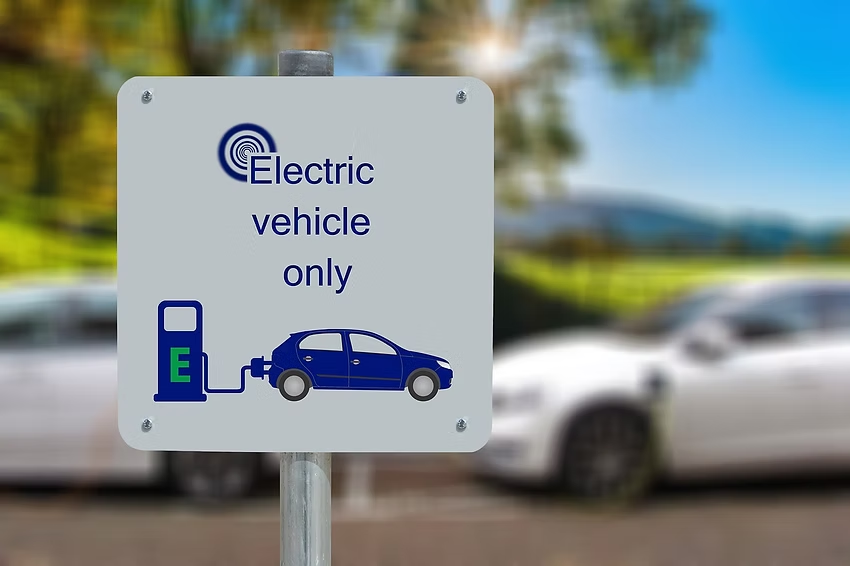
Electric Vehicles: Where Does the Energy Come From?
Arkadiy Matsekh
Arkadiy Matsekh PhD - Arky to us - obtained his PhD from the Institute of Thermophysics, Siberian Branch of the Russian Academy of Sciences with a major in thermal physics and theoretical thermal engineering. He worked as a postdoc research fellow at Kyushu University, Japan studying applied superconductivity for energy applications and later moved to Australia to join a privately-funded project of a large superconducting homopolar generator. He is currently designing and study electric propulsion systems and is particularly interested in light electric vehicles in general and electric bicycles in particular, seeing them among the key components of sustainable transport. Also, he loves cycling and rides push bikes a lot!
Swapping from a petrol car to an electric vehicle (EV) is seen among the most impactful actions you can take to reduce personal emissions. But is it really?
In this detailed and unashamedly science-heavy blog, one of TCA's resident scientists, physicist Arkadiy Matsekh PhD, takes a deep dive into the world of EVs to help us understand the reality behind claims that electric vehicles are the answer to our personal transport-related carbon footprint woes, and offers some thoughts as to where the real solutions may lie.
What's up, Doc?
With estimates taken from the current UK and European-average energy mix, emissions associated with driving an EV are notably less than the emissions from driving a petrol or diesel car. Assuming 12,000 km is driven per year, an EV emits around 1200 kg of equivalent CO₂, saving between 1,400 - 1,900 kg in comparison to an equivalent petrol car over the service life of the vehicle. So, as far as the conventional car-centered sustainable transport story goes, it is very impressive!
However, to save lots, you need to drive lots: the ‘service life’ of an EV can range from 150,000 to 300,000 or even 500,000 km before the vehicle is considered 100% depreciated. So, to make these emission assumptions hold, the owner is obligated to drive ~300,000 km, continuing to consume a substantial amount of energy from a limited energy budget. This would mean creating something like 30–40 tons of emissions “over the service life of the vehicle”. So, is it really that sustainable after all?
Diving into the details...
I am a physicist, and as physicists we are specifically trained to do what is called “the order of magnitude estimate” - more colloquially known as the back-of-the-envelope calculation. This is not a particularly precise method of calculation but is a very valuable tool in working things out to the nearest power of ten. Using this tool, we can quickly assess the viability of complex ideas and technological solutions; and ask tough questions early. So, to give a more or less informed answer to the question asked in the first paragraph, let’s do some wild back of the envelope math!

Let’s start with the energy needed to drive an EV: for this we’ll use the Tesla 3 as an example. Tesla EVs are commonly held as a frontier of green transportation, so let’s put their sustainability to test. Model-3’s energy consumption in standard tests is a remarkable 15 kWh (consumed from the grid-kilowatt-hour: a unit of energy equal to 3,600 kilojoules) per 100 km, with the vehicle's aerodynamics being pretty much identical to that of Toyota Prius — another golden standard of energy economy in personal transport. If you want a more luxurious electric car with more space, more power, longer range, etc. then this figure increases to about 20 kWh per 100 km and even more for larger vehicles like SUVs.
In real-life conditions the energy consumption of an EV might be notably higher, especially in cold weather when a heater is essential. Driving such a vehicle for 7,000 km per year (UK per person average) demands 1,050 kWh per year consumed from the grid or, dividing by 365 days, 2.9 kWh of electric energy per day. For a family car (one car per a household of 3) 21,000 km / 3,150 kWh per year (or 1050 kWh per person per year) seems like a reasonable estimate (very likely an underestimate). Is it a lot, or is it little? Well, it is comparable with the average annual residential electricity consumption in the UK (around 3,700 kWh in 2024). So, a household with an EV (nearly) doubles its electricity consumption… this is significant!
So, where does this electricity come from?
The United Kingdom has been pretty good at decarbonizing electricity production; yet around half of electricity produced is still made by burning gas or other fossil fuels. Renewable electricity (excluding nuclear and imported nuclear from France) is still a minority in the energy mix and in essence all the energy produced by wind, sun, hydro and other renewable sources is absorbed by the grid and used up. Since we can’t expect the increase in production of renewable electricity on demand, any addition of high-power electricity consuming devices to the grid - like our Tesla 3 - forces grid operators to meet the demand for additional power by burning more fossil fuels.

This is crucial to understand since grid emissions are the major assumption used by policy makers, car manufacturers, environmentally-concerned electric car enthusiasts and even researchers doing life-cycle assessments when they estimate EV carbon-dioxide emissions. Grid emission is the amount of carbon dioxide emitted per 1 kWh of electric energy delivered to consumers. Its estimate is obtained from the present-day energy mix with relatively small proliferation of EVs. However, an increase in electricity consumption affects the energy mix: as overall electricity consumption increases, additional production is very likely to come from non-renewable sources making the calculation invalid. Or at least not entirely correct.
If we apply typical grid emissions (for example 230–300 g of CO₂ per 1 kWh-electric for UK in 2024) to an electric vehicle, in order to calculate emissions associated with its operation – equivalent of “tailpipe” emissions of a fossil fuel-powered car - we arrive at a number of around 40–60 g of CO₂-eq per 1 km travelled depending on a car. If we apply the same calculation to a conventional car, we get something like 170±30 g of CO₂-eq per 1 km travelled. However, if we apply a coal-only assumption to an EV (~1000 g per 1 kWh-electric), then “tailpipe” emissions of an EV become 160±40 g per 1 km travelled.
(CO₂-eq = the amount of CO₂ that would warm the earth as much as the amount of any other gas. It is used to provide a common scale for measuring the climate effects of different gases.)
Of course, any future transportation policy brochure or EV advertisement would include the low emissions value, implicitly assuming that additional electricity drawn from the grid is going to be produced with the same grid emissions as the current grid’s emissions. And, as I mentioned above, this is unlikely to be the case — renewable sources do not deliver energy on demand, or at least their capacity to deliver more power is essentially limited.
And, if we imagine that the entire UK car fleet of 40 million cars mysteriously and magically turned into battery-electric vehicles overnight, electricity consumption would increase by about 18–20%. Wikipedia suggests that overall annual per capita electricity production in the UK in 2024 is about 5,800 kWh – this additional production of 1,050 kWh/person/year then marks a significant increase.
To calculate how much power must be added to the grid, first calculate that one year is 8,760 hours. As established above, 1,050 kilowatt-hours are the amount of energy used by one person per year driving a Tesla-3. If we divide 1,050 kWh by 8,760 hours, we get 120 Watts of continuous electric power drawn from the grid to allow one person to drive a highly-efficient Tesla-3 for 7,000 km per year. Finally, if we multiply 120 W by the population of around 68 million people, we reach a final figure of about 8.2 GW of additional electric power continuously supplied to and drawn from the grid.

So, we inevitably arrive at the conclusion that - allowing for transmission losses and some safety margin - to switch all cars to EVs, the United Kingdom would need the equivalent of nine additional 1-GW power plants continuously operating to fulfil electric cars’ energy demand. Bringing several large fossil-fuel power plants online is not an option if we are truly concerned about actual net reduction of CO₂ emissions. It would only serve to make “big coal” (or “big gas”) smile, because all of a sudden, they are back in business, “helping” to achieve sustainability goals. This is important to remember next time you see politicians or car manufacturers ranting about electric cars reducing carbon dioxide emissions without any mentioning of additional renewable electricity needed to make it happen.
So, sudden and mass EV usage would mean only changing bad for worse. While there are some indications that EVs powered by 100% coal-fired electricity are marginally not as bad as normal cars in terms of environmental damage done, this is an open discussion and I will do the math about it in an upcoming blog. In general, it’s a close race and ultimately hard to tell which is the worst polluter. It all boils down to a particular car model’s energy economy - determined by its aerodynamics, weight and tires - and to a much lesser extent by the type of drivetrain a vehicle uses. In this scenario EVs are likely somewhat better, but only if you drive a lot, due to the ‘sunk cost’ of additional embodied energy in the EV, which is the equivalent of emissions and/or energy usage from driving a petrol car 20,000–30,000 km.
Let’s look at this matter from the perspective of wind power…
Onshore wind power remains the cheapest source of electricity in Europe, whilst offshore is now roughly on par with (or even somewhat cheaper than) fossil fuel generation.
In order to generate 9 GW of power, installed nameplate capacity (intended full load sustained output) of onshore wind turbines should be in the range of 32 GW, dipping to 20 GW offshore. For comparison, in 2024 the installed wind capacity in the UK exceeded 30 GW, delivering on average around 10 GW of power to the grid.
So, to keep everyday transportation more or less carbon-neutral and maintain total grid emissions owning and driving personal cars as much as we do today, we would need to build and integrate roughly 2,600 large (7–8 MW) offshore wind turbines to power our hypothetical electric car fleet of 40 million Tesla-3s. This fantasy offshore wind farm would take up an area of around 2,000 km². On land, this is likely to be around 6,000+ units with a nameplate capacity of 5 MW spread over an area of around 3,600 km² — over double the size of Greater London.

To put it another way: one 5 MW wind turbine is required to power every 6,000 cars, or 5,000–5,500 cars if we want the turbine to return its energy investments and generate enough electricity to build another two-three new turbines. Also, by the order of magnitude, 1 W of installed onshore wind power still costs about $3, so installing an additional 32 GW will cost roughly $96 billion in total to power EVs for the United Kingdom — in addition to the retail price of the vehicles themselves. Penny for your thoughts, Mr. Musk?
So, where does this leave us?
Let’s return to the question we asked right at the beginning of this post: is swapping a petrol car to an EV an impactful action in reduction of carbon emissions? On paper, even on many official papers – yes. But after doing the math I am inclined to say no, and here’s why:
- Additional demand for electricity is likely to be delivered from burning fossil fuels, which makes an EV barely less polluting than a conventional car.
- Even if we begin expanding renewables aggressively, we need to reinvest the energy produced by them for further expansion of the industry, not to drive as we please.
- There are always better uses for electricity than just driving a car. During the transition period the emphasis must be on installing as many renewable/non-polluting sources of electricity as possible, and not creating and buying yet another high-power energy consumer like electric vehicles.
- By swapping your existing car for an electric one, you add one more car to the second-hand market, pushing the price of used cars down and indirectly increasing car ownership, which is the strongest predictor of driving. You then add one more appliance constantly consuming 120 Watts of precious electric power from the grid...
So, what can you do?
In my opinion, in the present-day real-life scenario the most impactful action in personal transport is driving as little as possible (say to 2,000–3,000 km per person per year) and living car-free if you don’t have one. A great book which I highly recommend if you are on the path to overcome the “car bias” and wish to learn ways of living without a car is “Urban Transport without the Hot Air, Volume 1: Sustainable Solutions for UK Cities” by Steve Melia.
If your life circumstances force you to buy a car, the most impactful action would be buying a second-hand hybrid (compact or full-size), compact petrol cars or compact EVs with small battery packs of 20–25 kWh, while keeping mileage under 3,000 km per year per person.
All these measures lead to immediate, or almost immediate reduction in energy consumption and emissions reductions. You won’t need to drive the first 20–30 thousand km in as little number of years as possible just to start saving emissions as you do with an EV.
I can see you asking me the question: “How the hell do I cover the other 4000-5000 km per year?” Fair question. Well, first of all, try to eliminate unnecessary driving: use old-school carpooling and combine trips — doing more than one thing per trip. This certainly requires more planning than usual, and for some it might represent a significant “lifestyle change” at first, but I’d say it’s probably justified if you’re aware of the potential for climate disaster and want to prevent it…

This probably still leaves you with 3500-4000 kilometers per year that need to be covered. My answer is active travel: walking, cycling, existing public transport and, my personal favorite, urban electric micro-mobility. Light electric vehicles, in particular electric bicycles and other electric rideables are by a very big margin (one order of magnitude) more energy efficient than the most energy-efficient conventional electric cars. In my opinion, in the context of reducing our personal carbon footprint, energy consumption and making our cities more livable places, light electric transport is the worthiest application of electric propulsion.
The bottom line.
The best way to use an electric car is not to own a car at all. Make your everyday trips a combination of walking, cycling and existing public transport — the more people use those existing systems instead of driving cars, the more efficient they become. Alternatively, you can simply hop on your e-bike and ride 12–15 km in under 40 minutes without breaking a sweat.
In one of my following posts, I am going to expand on renewable sources and will try to dispel some perpetuating myths about how expensive and inefficient they are (spoiler – they are very efficient and currently are the cheapest source of electricity in Europe!).
For now, I hope that I didn’t put you to sleep with my calculations and numbers, but sustainability is always about the numbers in the end. To make any sensible behaviour change towards more sustainable living the numbers simply must add up, hence it’s very important to understand them, at least by the order of magnitude. I’m keeping my fingers crossed at least some of those numbers make sense to you too now.